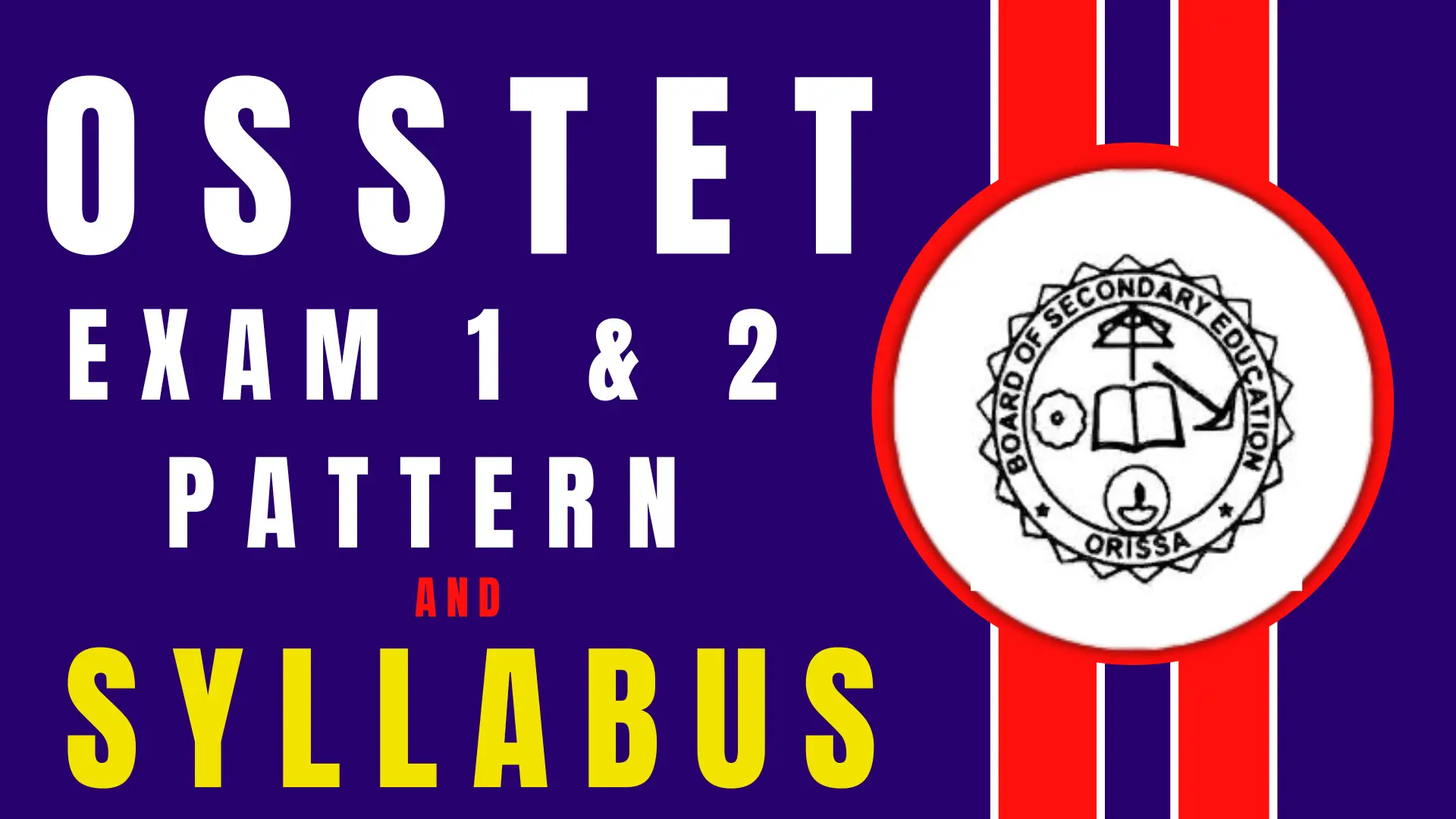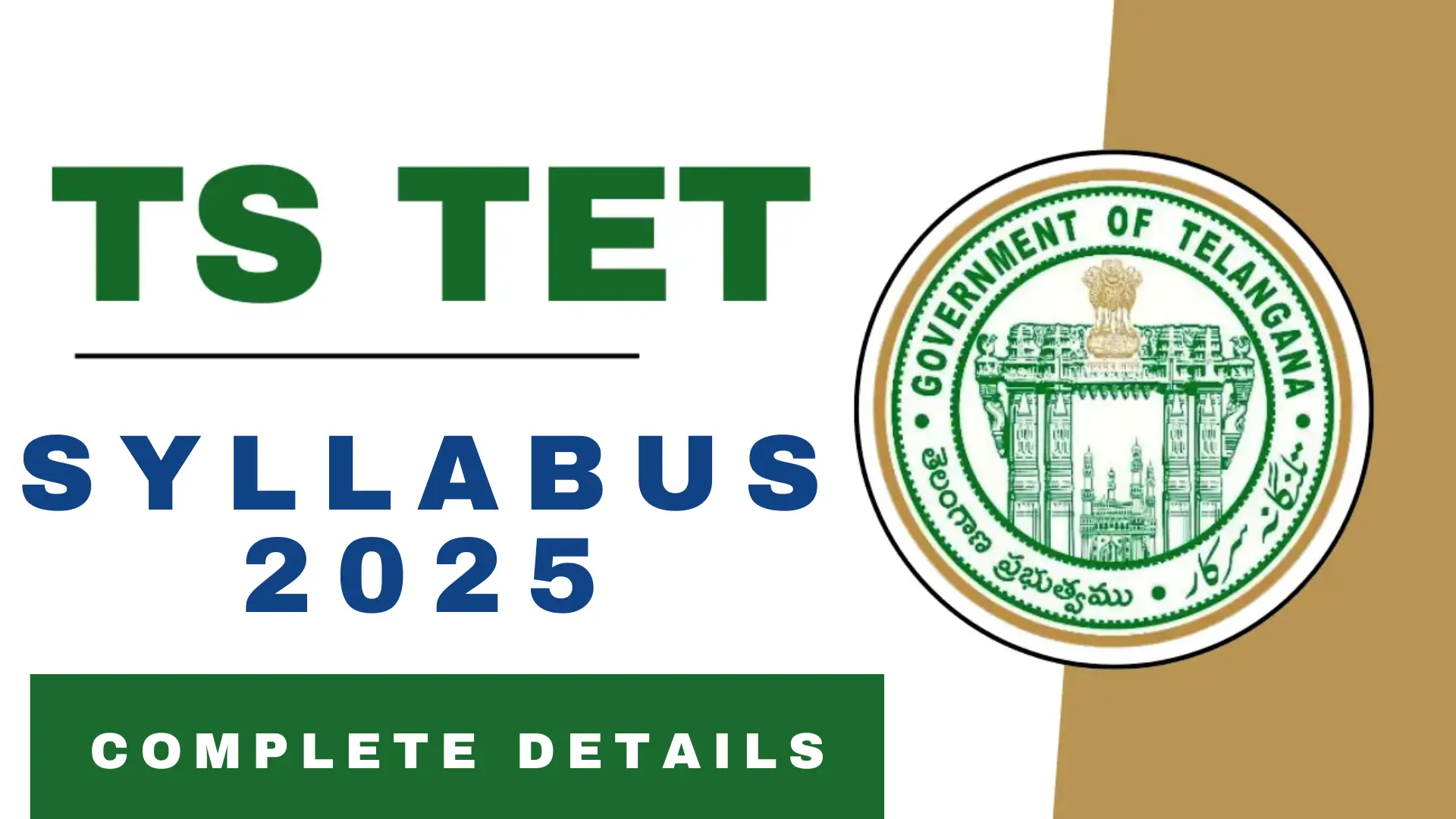The Odisha Secondary School Teacher Eligibility Test (OSSTET) is a crucial examination conducted by the Board of Secondary Education, Odisha (BSEO) to assess the eligibility of candidates for teaching positions in secondary schools across the state. As the 2024 exam approaches, it’s essential for aspirants to familiarize themselves with the latest exam pattern, syllabus, and important topics.
This comprehensive guide will provide you with all the necessary information to prepare effectively for the OSSTET 2024.
Odisha OSSTET Exam 2024

| Exam Conducting Body | Board of Secondary Education, Odisha |
| Exam Name | Odisha Secondary School Teacher Eligibility Test (OSSTET) |
| Paper Scheme | 150 Questions 150 Marks |
| Negative Marking | No negative marks |
| Duration | 2.5 hours |
| Official website | www.bseodisha.nic.in |
OSSTET 2024 Exam Pattern
- Paper 1: For TGT (Science – PCM/CBZ), TGT Arts, Hindi Teacher, and Classical Teacher (Urdu/Telugu/Sanskrit)
- Paper 2: For Physical Education Teachers
Paper 1 Exam Pattern
The Paper 1 exam pattern is designed to assess candidates’ knowledge in various subjects and pedagogical skills. Here’s a breakdown of the sections:
| Subjects | No. of Questions | Marks |
|---|---|---|
| Language-I (Odia) | 20 | 20 |
| Language-II (English) | 20 | 20 |
| Mathematics, Physics, Chemistry (for TGT Science) | 60 | 60 |
| Geography & Economics, History & Political Science, English (for TGT Arts) | 60 | 60 |
| Hindi/Telugu/Urdu/Sanskrit (for respective language teachers) | 60 | 60 |
| Child Development, Pedagogy, School Management & Evaluation | 50 | 50 |
| Total | 150 | 150 |
Paper 2 Exam Pattern (Physical Education)
The Paper 2 exam pattern for Physical Education Teachers is structured as follows:
| Subjects | No. of Questions | Marks |
|---|---|---|
| Language-I (Odia) | 20 | 20 |
| Language-II (English) | 20 | 20 |
| Contents of C.P.Ed. and B.P.Ed. Course | 60 | 60 |
| Child Development, Pedagogy, School Management & Evaluation | 50 | 50 |
| Total | 150 | 150 |
OSSTET 2024 Syllabus
Language I (Odia) and Language II (English)
- Comprehension from an unseen passage
- Comprehension from a poem
- Grammar and usage
- Speaking (commonly mispronounced words)
Mathematics, Physics, and Chemistry (for TGT Science)
Mathematics
- Number System
- Algebra
- Geometry
- Mensuration
- Trigonometry
- Statistics and Probability
Physics
- Mechanics
- Heat and Thermodynamics
- Optics
- Electricity and Magnetism
- Modern Physics
Chemistry
- Atomic Structure
- Chemical Bonding
- Periodic Table
- Organic Chemistry
- Inorganic Chemistry
- Physical Chemistry
Geography, Economics, History, and Political Science (for TGT Arts)
Geography
- Physical Geography
- Human Geography
- Economic Geography
- Geography of India
Economics
- Microeconomics
- Macroeconomics
- Indian Economy
History
- Ancient Indian History
- Medieval Indian History
- Modern Indian History
- World History
Political Science
- Indian Constitution
- Indian Political System
- International Relations
Hindi/Telugu/Urdu/Sanskrit (for respective language teachers)
- Literature
- Grammar
- Composition
- Teaching Methodology
Child Development, Pedagogy, School Management & Evaluation
- Growth and Development
- Theories of Development
- Intelligence and Its Theories
- Learning Process
- Classroom Management
- School Management
- Evaluation Techniques
Physical Education (for Paper 2)
- Human Anatomy and Physiology
- Physical Fitness and Wellness
- Sports Psychology
- Sports Training
- Sports Medicine and Physiotherapy
- Yoga and Physical Education
Important Topics
Language I (Odia) and Language II (English)
- Reading comprehension techniques
- Poetic devices and interpretation
- Common grammatical errors and their corrections
- Pronunciation rules and commonly mispronounced words
Mathematics
- Algebraic expressions and equations
- Trigonometric ratios and their applications
- Coordinate geometry
- Probability and statistics
Physics
- Newton’s laws of motion
- Laws of thermodynamics
- Reflection and refraction of light
- Ohm’s law and electrical circuits
Chemistry
- Periodic table and trends
- Chemical bonding
- Organic compounds and their reactions
- Acid-base equilibrium
Geography
- Climate and weather patterns
- Natural resources and their distribution
- Population dynamics
- Environmental issues
Economics
- Supply and demand concepts
- National income accounting
- Monetary and fiscal policies
- Indian economic reforms
History
- Ancient civilizations of India
- Mughal Empire
- Indian freedom struggle
- World Wars and their impact
Political Science
- Fundamental rights and duties
- Structure of Indian government
- Electoral process in India
- India’s foreign policy
Child Development and Pedagogy
- Piaget’s theory of cognitive development
- Vygotsky’s sociocultural theory
- Multiple intelligences theory
- Constructivism in education
School Management
- Leadership styles in education
- School development planning
- Resource management in schools
- Parent-teacher collaboration
Evaluation Techniques
- Formative and summative assessment
- A continuous and comprehensive evaluation
- Rubric development
- Performance-based assessment
Physical Education
- Components of physical fitness
- Principles of sports training
- Common sports injuries and their prevention
- Importance of yoga in physical education
Conclusion
The OSSTET 2024 is a comprehensive examination that tests candidates’ subject knowledge, teaching aptitude, and understanding of educational practices. By familiarizing themselves with the exam pattern, syllabus, and important topics outlined in this article, aspirants can prepare more effectively and increase their chances of success. Remember that consistent effort, strategic planning, and regular practice are key to achieving a good score in the OSSTET and embarking on a rewarding career in teaching.



